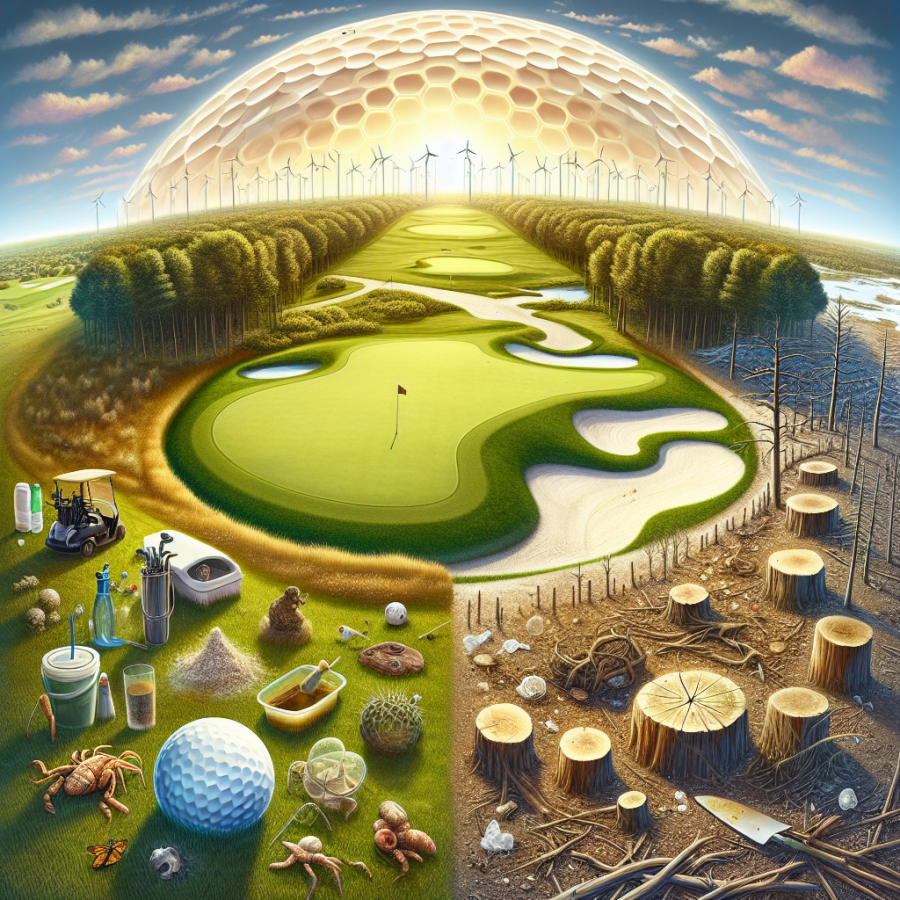Exploring the Ecological Consequences of Golf Courses
Golf courses, with their sprawling and manicured green spaces, may seem like they offer a haven for local ecosystems. However, a deeper look reveals various ecological consequences associated with these expansive green havens. Let's delve into these impacts, comprising habitat destruction, water usage, and pollution.
One of the primary ecological consequences of golf courses is habitat destruction. These recreational spaces are commonly constructed in areas rich in biodiversity. As such, they often result in the large-scale destruction of native vegetation and ecosystems. From the woodlands of North America to the scrublands of Australia, a plethora of habitats are razed to make room for golf courses. This doesn't merely serve to reduce environmental diversity; it leads to the displacement and sometimes even extinction of local fauna unable to adapt to rapid, large-scale changes in their habitats. Additionally, introduced grass species used on golf courses typically displace native plant species and disturb local ecological balance.
Aside from habitat destruction, the heavy water consumption associated with golf courses is another major source of ecological concern. Maintaining the lush green conditions seen on golf courses usually involves substantial water usage. This is particularly troubling in areas that face regular droughts or water shortages. Excessive irrigation can lower water tables, dry out natural wetlands, shift the balance of local ecosystems, and create water security issues for local communities. Furthermore, the water used for irrigation is often treated with chemicals to optimize grass growth and disease prevention, introducing another layer of environmental conflict.
A discussion on the ecological impact of golf courses would be incomplete without mentioning pollution. Golf courses generate significant pollution, primarily due to pesticide and herbicide use. These chemicals, used to maintain green uniformity and manage pests, can have dramatic effects on local ecosystems. They can seep into soil and water systems, harming local water quality and affecting both plant and animal life. Moreover, they can result in the death of insects and small animals, disrupt pollination patterns, and significantly alter the food chain in the local ecosystem.
Moreover, golf courses contribute to air pollution through maintenance machinery. The mowers and other equipment needed to maintain golf courses emit greenhouse gases, contributing to global climate change. Collectively, these ecological impacts demonstrate that while golf courses may present an image of serene natural beauty, their environmental cost is significantly higher than it appears.
Lastly, not to be overlooked is the impact of golf tourism on local environments. Golf tourism frequently involves long-distance travel, which contributes to carbon emissions and local environmental disturbances.
Read also:
Understanding the Costs: How Much Does a Golf Cart Really Cost?"
Unveiling the Hidden Environmental Costs of Golf Greens
Golf, a sport loved by millions globally, is more than just perfect swings, birdies, and eagles. It has hidden environmental impacts that most enthusiasts overlook. It is essential to understand that the intricate and beautiful golf courses are the result of meticulous and constant care made possible through substantial water, chemical, and energy consumption. Therefore, a careful look at these hidden environmental costs is crucial for both golfing enthusiasts and those who may never have held a golf club.
The use of water in golf courses is without a doubt one of the highest hidden environmental costs. Maintaining golf greens requires vast quantities of water. In fact, it is reported that an average 18-hole golf course consumes about 500,000 to 1,000,000 gallons of water per week during the irrigation season—enough to fill up to 1,500 average-sized swimming pools a year. This level of water usage threatens local aquifers, leading to water shortages in the neighborhood communities. It also significantly contributes to global water scarcity.
Pesticides and fertilizers are essential to maintaining the emerald green grass on golf greens. However, their usage in maintaining golf courses creates a significant environmental issue. With frequent application, pesticides and fertilizers often leach into the topsoil and runoff into neighboring water bodies. This chemical run-off affects the biodiversity of surrounding ecosystems, poisoning local flora and fauna, contaminating water supplies, and causing a disruption in the ecological balance.
The energy consumption to maintain golf courses is another alarming factor. Running golf carts, mowing the greens, pumping irrigation water, and lighting up the vast courses all consume an enormous amount of energy. Notably, the lawnmowers used to keep the greens perfectly trimmed run on fossil fuels, releasing large amounts of carbon dioxide. Studies have shown that a golf course's carbon footprint is significant enough to be a major concern even compared to other forms of land usage.
Moreover, golf courses disrupt natural habitats by replacing them with non-native vegetation that often requires more resources to maintain. By converting natural land into golf courses, many species lose their habitats leading to declining biodiversity levels. Furthermore, these artificially maintained environments potentially create conditions conducive for invasive species that can become threats to local biodiversity.
In addition to these, the construction and maintenance of infrastructures like clubhouses, facilities, and roads that support the golf course have their own environmental implications such as air and noise pollution.




